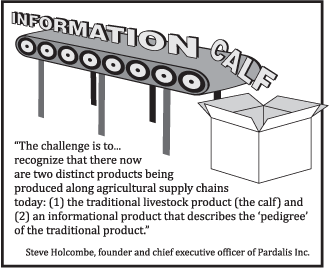BeefTalk: Do We Exist Only If Someone Else Knows We Exist?
 Wednesday, July 2, 2008 at 2:59AM
Wednesday, July 2, 2008 at 2:59AM The following excerpt is from a Beef Talk article recently authored by Dr. Kris Ringwall, Director of the Dickinson Research Extension Center for North Dakota State University. He is a regular and well-followed commentator within the beef industry.
"The concept of data collection is knocking on the door of the beef industry, but the concept is not registering. In fact, there actually is a fairly large disconnect.

The information associated with individual cattle is critical. Producers need to understand how livestock production is viewed ....
That distinction is not being made and the ramifications are lost revenue in the actual value of the calf and lost future opportunity. This is critical for the future of the beef business ...."
For the full article, go to the BeefTalk article, Do We Exist Only If Someone Else Knows We Exist?
As Dr. Ringwall is also the Director of CalfAID, a USDA PVP Program for livestock source and birthdate information, you may also want to compare the Pardalis news release from November, 2007 entitled CalfAID Director Testifies To International Trade Commission. And you might also want to check out a March 2008 news release from North Dakota State University entitled N.D.’s CalfAID Program to Continue.

Reader Comments